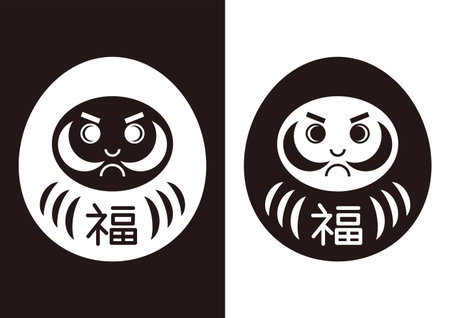1. Introduction to Cultural Beliefs and Home Design
When it comes to designing a home, cultural beliefs often play a subtle yet profound role in shaping our living spaces. The kitchen, as the heart of any household, is an especially powerful symbol—one that connects daily rituals with deeper philosophies about life and prosperity. In Britain and China, attitudes towards where the kitchen belongs within a house reflect not only different aesthetic preferences but also unique worldviews about wealth, harmony, and wellbeing. Understanding these approaches invites us to see how culture influences more than mere decoration; it shapes the very essence of home life and the flow of fortune within its walls.
2. The British Perspective: Practicality and Social Connection
In the United Kingdom, the kitchen has long held a central role within the household, both physically and emotionally. While the architectural styles of British homes have evolved through the centuries—from Tudor cottages to modern city flats—the prevailing attitude towards kitchen placement has remained rooted in practicality, efficiency, and a unique sense of togetherness. Traditionally, British kitchens were tucked away at the back of the house, close to garden access for fresh produce and convenient deliveries. Over time, however, this secluded positioning has given way to a more open and integrated design philosophy.
The Modern Kitchen: Heart of the Home
Today, many British families view the kitchen as the true heart of their home—a place not just for preparing meals but also for gathering, entertaining guests, and sharing daily life. Open-plan layouts that blend kitchen, dining, and living spaces are increasingly popular across England, Scotland, Wales, and Northern Ireland. This shift reflects a desire for sociability: hosting Sunday roasts, enjoying tea with neighbours, or chatting with family while cooking supper. The kitchen’s location is chosen less for auspiciousness or wealth-attracting properties and more for its ability to foster warmth and connection.
Functionality vs Tradition
| Aspect | Traditional British Homes | Contemporary British Homes |
|---|---|---|
| Kitchen Placement | Back of the house, near garden | Central or open-plan with living space |
| Main Focus | Utility and privacy | Social interaction and openness |
| Cultural Emphasis | Practicality | Togetherness & hospitality |
The Social Fabric of British Kitchens
The British approach to kitchen design is deeply entwined with values of modesty and camaraderie. Instead of associating kitchen placement with fortune or prosperity—as in some Eastern cultures—Britons regard it as a reflection of lifestyle preferences and family priorities. Whether it’s hosting an impromptu ‘cuppa’ or celebrating Christmas dinner, the kitchen remains a cherished communal space where everyday moments become meaningful memories.

3. The Chinese Perspective: Feng Shui and Prosperity
Step into a traditional Chinese home and you will quickly sense a world where every detail is infused with intention, especially when it comes to the kitchen. Rooted in centuries-old Feng Shui philosophy, the placement of the kitchen is considered crucial—not just for culinary convenience, but as a silent architect shaping family harmony and prosperity.
According to Feng Shui, the kitchen is more than a space for preparing meals; it is the heart of wealth and nourishment. In many Chinese households, elders might recount stories about fortunes made or lost, all hinging on where the stove was placed or which direction the kitchen faced. This belief is not mere superstition but a spiritual blueprint—an intricate dance between architecture and energy.
The guiding principle is qi—the invisible life force believed to flow through everything. A well-placed kitchen encourages the smooth movement of positive qi, ensuring abundance and good health for all who live there. For instance, kitchens should not be directly opposite the front door, as this alignment is thought to allow wealth to escape as soon as it enters. Similarly, stoves should avoid being placed under windows or facing toilets, lest good fortune dissipate or become tainted.
But there’s an emotional wisdom here too. Families often gather around simmering pots and steaming rice bowls, sharing stories and strengthening bonds. A harmonious kitchen layout supports these rituals, subtly nurturing unity and peace. The belief runs so deep that some families consult Feng Shui experts before renovating or purchasing homes—hoping to secure not only comfort but also enduring prosperity.
While Western design often prioritises practicality or aesthetic trends, in China, a thoughtfully positioned kitchen is like a guardian spirit—silently influencing fate and fortune. To truly understand Chinese attitudes towards wealth and wellbeing, one must look beyond appearances and listen for the gentle whisper of ancient wisdom echoing through each carefully chosen corner of the home.
4. Kitchen Location and its Impact on Wealth: East vs. West
When we examine kitchen placement through the lens of cultural symbolism, fascinating differences emerge between British and Chinese traditions. In Britain, the kitchen is often seen as a practical space—a place to prepare meals and gather casually. Placement typically revolves around convenience and efficiency, with little emphasis placed on spiritual or metaphysical factors. By contrast, in China, the orientation and position of the kitchen are deeply rooted in Feng Shui principles, where every direction holds specific energy that can influence family fortune, health, and harmony.
| British Perspective | Chinese Perspective | |
|---|---|---|
| Symbolic Meaning | Functionality, Social Warmth | Energy Flow, Prosperity, Harmony |
| Ideal Placement | Close to living/dining areas for accessibility | Avoid north-west (linked to loss of wealth), favour south-east (wealth corner) |
| Impact on Wealth & Wellbeing | Little direct association; more about family cohesion | Directly linked—wrong placement believed to drain fortune or affect health |
The Subtle Power of Perception
For many British homeowners, a well-designed kitchen is a sign of middle-class aspiration and success. Spaciousness, open-plan layouts, and connectivity to the garden are sought after not for mystical reasons but as markers of lifestyle quality and hospitality. On the other hand, in Chinese homes, the stakes feel higher—the wrong stove direction or proximity to certain rooms is thought to invite financial difficulty or conflict. The kitchens “fire” element must be balanced with water sources and aligned so that wealth energy can flow unimpeded throughout the house.
The Emotional Resonance of Space
This divergence shapes not only floorplans but also emotional relationships with ones home. Where a Brit might see a kitchen as simply “cosy” or “practical,” a Chinese homeowner could feel genuine anxiety or pride based on how their kitchen aligns with ancient wisdom. For them, the very air seems to shimmer with invisible currents that promise abundance—or warn of misfortune—depending on how walls and windows are arranged.
Wealth Beyond Money: Success and Wellbeing Compared
Ultimately, both cultures link kitchen placement to wellbeing—but define it differently. In Britain, success springs from togetherness and comfort; in China, it emerges from harmony with natures forces. These worldviews offer a rich tapestry of meaning for anyone seeking to understand how our surroundings shape our destiny.
5. Modern Adaptations and Blended Homes
In our ever-globalising world, the boundaries between cultures are becoming beautifully blurred—especially within the walls of our homes. The British and Chinese approaches to kitchen placement, once clearly defined by tradition, are now experiencing a gentle fusion, driven by multicultural living and the desire for both comfort and prosperity.
Today, British families with Chinese heritage—or those inspired by Chinese philosophies—may reconsider the traditional English kitchen layout. Rather than simply placing the kitchen at the back of the house for convenience, they might explore orientations that invite positive energy or “qi,” perhaps avoiding direct alignment with the front door or opting for kitchens filled with natural light to promote well-being and abundance.
Conversely, some Chinese homeowners in the UK have adapted their kitchens to better suit modern British lifestyles. Open-plan layouts, popular in Britain for fostering family togetherness, are being blended with subtle feng shui principles: mindful positioning of hobs and sinks, or incorporating screens to symbolically separate cooking spaces from living areas without losing that cherished sense of openness.
This cultural exchange is not limited to architecture alone—it extends into everyday rituals. A British-Chinese family might gather for Sunday roast in a kitchen designed with both Western efficiency and Eastern harmony in mind; they may even place symbolic objects like lucky bamboo near windows or select warm colours to stimulate appetite and fortune, seamlessly merging two worlds in one harmonious space.
The result? Homes that reflect not only personal taste but also respect for diverse beliefs about prosperity. By thoughtfully blending traditions, these families create environments that nurture both material wealth and spiritual well-being—a testament to how cultural differences can enrich our lives when embraced with curiosity and intention.
6. Conclusion: Reflections on Cultural Nuance and Home Happiness
As we journey through the fascinating contrasts between British and Chinese perspectives on kitchen placement, it becomes clear that our homes are not just physical structures but living stories shaped by deep-rooted cultural values. The British approach, often pragmatic and guided by convenience, reflects a sense of understated harmony and an openness to adapting tradition for modern lifestyles. In contrast, the Chinese philosophy—steeped in feng shui principles—treats the kitchen as a powerful symbol of prosperity, where the very orientation of the stove or the position of the door is believed to influence a family’s fortune.
These differences serve as gentle reminders that wealth and happiness can be interpreted through many lenses. For some, well-being flows from practical design and comfort; for others, it springs from honouring ancestral wisdom and subtle energies. When these worldviews meet—whether in multicultural households or international collaborations—the result is an opportunity for deeper understanding rather than conflict.
By appreciating such nuances, we can move beyond stereotypes and open ourselves to richer relationships and more meaningful home environments. Designing a home with sensitivity to each person’s beliefs creates a space where everyone feels respected and understood. Similarly, approaching cross-cultural exchanges with curiosity—rather than judgement—invites us to expand our own definitions of happiness and success.
Ultimately, recognising cultural differences in something as intimate as kitchen placement invites us to ask bigger questions about what truly matters at home: Is it luck? Comfort? Connection? Or perhaps, as both British pragmatism and Chinese symbolism suggest in their own ways, it is finding balance—a harmony that nourishes both body and spirit.
In embracing these subtleties, we don’t just build better homes; we cultivate the wisdom to weave together old traditions and new ideas, creating spaces that reflect not only where we come from but also who we wish to become.


